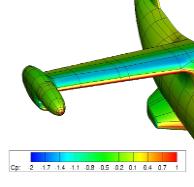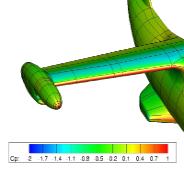Introduction
During the past 50 years, the scientific community attempted to answer some complex questions about the tilt-rotor aircraft. This new type of vehicle is presented as an alternative to helicopters, and has the capacity to combine vertical take-off/landing capability with high speed cruise. This result in a compromise in many aspects of design, since the same blade has to operate as a helicopter rotor in hover and as propeller in forward flight. In addition, interactional aerodynamics can be very important in tilt-rotor aircraft, which should be extensively studied and researched to improve safety and performance. This work will employ CFD for the study of tilt-rotors and wind tunnel data will be used for validation.


